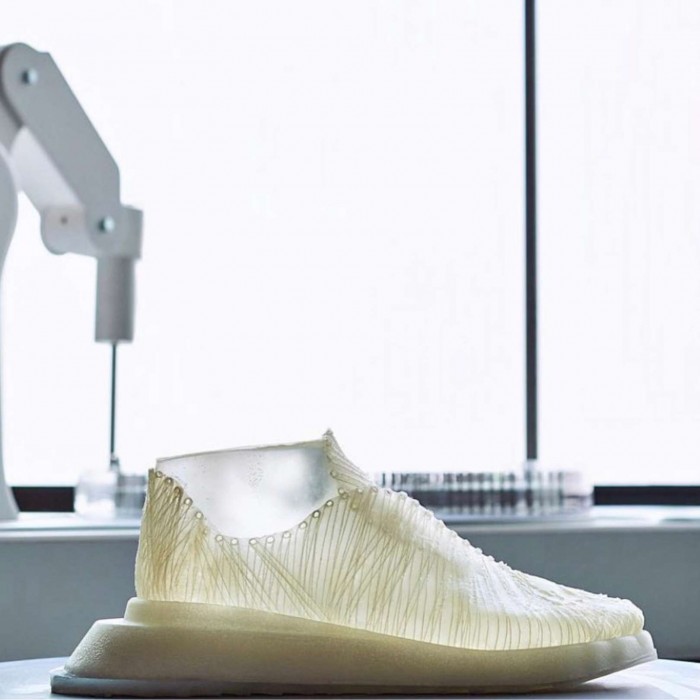Former Adidas designer Jen Keane and scientist Ben Reeve’s London-based biotextile startup Modern Synthesis has developed a microbial textile platform that they believe could shift the fashion industry away from energy-intensive synthetic materials.
The new system to create textiles involves using bacteria to ‘weave’ biotextiles. As the bacteria feed on sugar, they grow, trailing tiny fibres of nanocellulose behind them. To create a specific object or design, a robot builds a ‘scaffold’ of fibres that guides the growth of the bacteria. The microbes grow the new textile around the shape of the scaffold, forming a hybrid material of scaffolding and nanocellulose. The result is a material with the appearance of nylon, ryet its texture feels dry and warm to the touch, akin to cellulose or paper.
According to Keane, the nanocellulose fibres are eight times stronger than steel and stiffer than the well-known synthetic material Kevlar, which is often used in military settings. Furthermore, by utilising diverse thread types as the foundation, the manufacturing method can be modified. And certain of the threads can biodegrade, while others can be recycled like other cellulose-based materials.
One of the biggest advantages of the process is that an object can be grown to an exact shape, meaning there is very little to no waste. Modern Synthesis has also explored adding colour to the material with bioengineer Marcus Walker, who has used genetic-engineering techniques to develop a self-dyeing bacteria. Using this bacteria, Modern Synthesis has grown a 100% compostable black shoe.
‘What we’re trying to do is build this new class of materials that is more sustainable but also allows us to design and create in new ways, which is really exciting for the fashion industry,’ said Keane. ‘At the end of the day, we’re trying to build a circular manufacturing system with these microbes.’
Substituting synthetic fabrics with biomaterial could mitigate the environmental impact of petrochemical usage in which, according to an estimate, approximately 350 million barrels of crude oil are consumed annually for the production of synthetic textiles.
Read more
Photographs: Modern Synthesis.







